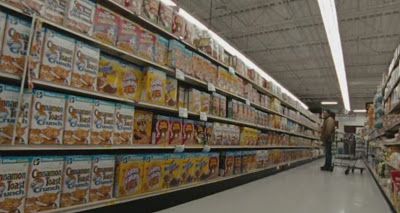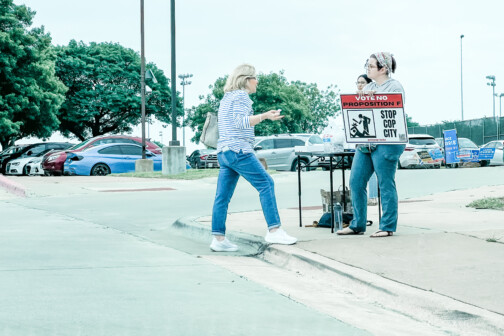From The Genius of the Beast by Howard Bloom in a chapter entitled Choice Production, one of my favorite recent subjects. In it he discusses the ending of the Dark Ages via intercity trade reemerging in “fairs” or markets of European cities and the role that vestigial Roman “continent-spanning trade hookups” aka roads played in pulling the continent out of the Dark Age, or what he argues was a malady of the mind and coercive policies/directives that enforced a disconnected world of censorship turning all minds into black holes rather than burning stars:
Traveling merchants gave you the chance to buy a glass vase from Byzantium or a steel knife from Spain. Like any good thing, choice in overdose can be a poison. But in moderate amounts, choice gives you a sense of control. And a sense of control ups the power of your immune system, boosts alertness in your brain, and stimulates new brain cells to grow.
Today, I would (and have) argued that we at the same time have both too much and too limited choice for markets of choice and commerce to properly function. This also applies to transportation, as I wrote here:
Currently in many cities, American ones in particular (and especially in Dallas), all roads lead to highways. Highways are literally the one place where all ages from 16-80 (and younger for passengers), all incomes, all backgrounds, converge and interact. Except that interaction is hardly a compassionate or courteous one. We forget all of our cultural mores for acceptable behavior when somebody is cutting us off to make the exit. Gotta get to work to push that paper on time!
I gave up driving (mostly) and my car (for good) because it was a miserable experience personally. But, that isn’t a lifestyle choice that is appropriate or possible for many.
In Genius of the Beast, Bloom extolls the virtues of the Roman interconnected “highway” system they constructed to link their empire. In Roman times, it was used to efficiently ship troops to the frontier and goods back to Rome. As Bloom suggests, it became the backbone of a people pulling themselves out of the Dark Ages.
Keep in mind, this isn’t to apologize for the destructive over-building of highways American cities have brought upon themselves (with the kindly urges (cash/standards) of the Federal Government).
Rather, I would argue that it is critical to have connections between things at appropriate scales. Intercity trade requires a highway, airports and railroad connections to ship goods/people in the appropriate manner. All of which arrive to the edge of a city and then find a more fine-grained manner in which to enter the actual city.
In fact, looking at history, the central feature of daily life would be something that I might call a super-magnet, in that not only does it draw people to it, but it literally bends and morphs the shape of the city around it. Rising out of the middle ages, it was the convergence point at central “fair” or marketplace where interpersonal transactions took place. In other eras, it might be the central cathedral, or even others a forum or monument to various iconography depending upon the weltanshauung of the day.
The super magnet of today, the dominant organizing element of our lives, and relatedly, our cities, are highways. But, how meaningful is that existence? As I wrote:
Cars promised freedom. But is that freedom real or imaginary? There is typically only one way to the store or to school or to work. The only real freedom we have is the choice between the perceived faster lane and the lane we currently occupy. Does that help or is that just another extra couple of million that we spent on what was thought to be a luxury, more lanes, more flow, hooray!
This is why we look at European cities as exemplars in how they maintain logistical hubs at the periphery of cities where industrial uses can agglomerate around, all of which, the logistics, the infrastructure, the industrial uses, are all considered LULUs or locally undesirable land uses. The older cities have had more response time and greater resilience instilled through centuries of adaptations, overshoots, actions/reactions, booms and busts.
On the other hand, while highways have their purpose, Intracity mobility/commerce/interconnectivity, like intercity connectivity, similarly requires maximum mobility by way of a variety of choices, none of which should act as barriers. With regard to intracity trade (and by trade I mean all things that can we demand traded: ideas, goods, services, genes – yes, genes. This is why we are in cities in the first place, to find a mate correct?), highways are disconnective agents instilling greater inefficiency into the system. This is why it is no surprise that economist’ studies are beginning to show that highways internal to cities are sinkholes for both money and people. That’s a brain drain.
Intracity connections should be made as efficiently as possible. In Lewis Mumford’s words (and I know I cite this quote often):
“The purpose of transportation is to bring people and goods to places where they are needed, and to concentrate the greatest variety of goods and people within that limited area, in order to widen the possibility of choice without making it necessary to travel. A good transportation system minimizes unnecessary transportation; and in any event, it offers change of speed and mode to fit a diversity of human purposes.”
It can take any form and it will still occur. The question then becomes do we want it to be wasteful, inefficient, and actually a barrier to commerce and trade like the highway and mall system?
The other day I mentioned that many a Chamber of Commerce do not understand economic development. This is why. They are dinosaurs of a mind that all highway building is a new connection, new means of trade. This is incorrect. They have a very specific and appropriate application, but beyond that are an enemy of commerce.
Highways between cities (and in this case I am defining cities as the economic entity, ie the Metroplex is one entity that has metastasized beyond arbitrary political boundaries) are necessary, ie 45 between DFW and Greater Houston for the facilitation of and participation in the global web of trade and the idea combustion of progress.
But within cities, within the outer loops, we should be focusing on place-based transportation (which means multi-modal and people first) and neighborhood centers to facilitate increased fine-grained interconnectivity and trade. Even though Witold Rybczynski recently argued that centralized planning has failed (and that is true), but it failed because of over-reliance on highways, applied in inappropriate places.
Rybczynski is simply being reactionary here. We still need centralized planning to UNDO all of the mistakes centralized planning created. Government entities will be the only ones able to tear down intracity freeways and it will take cooperation of all levels of government to do so. Our cities will all be the better for it. This I promise you.







